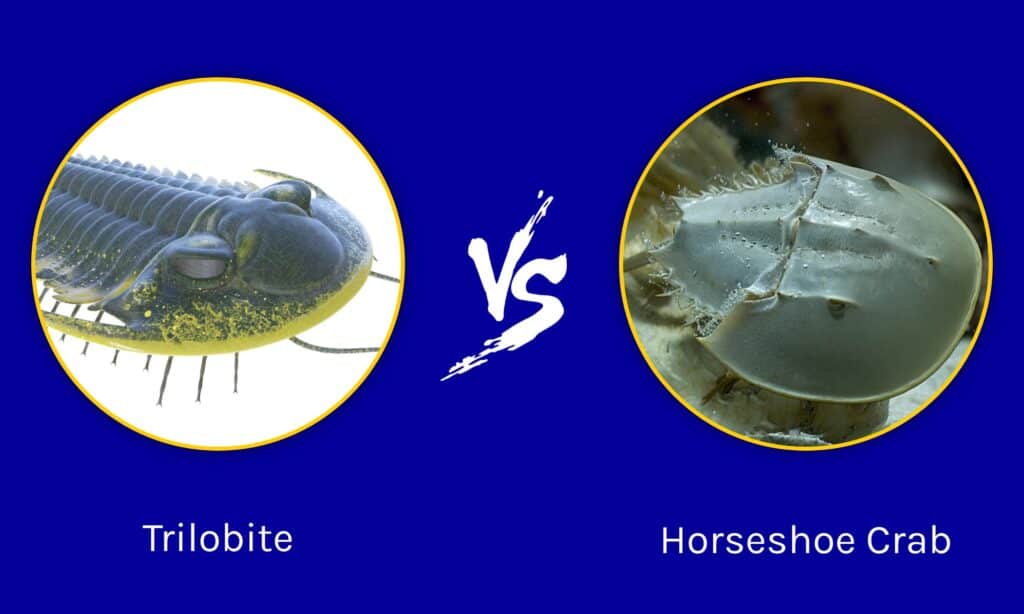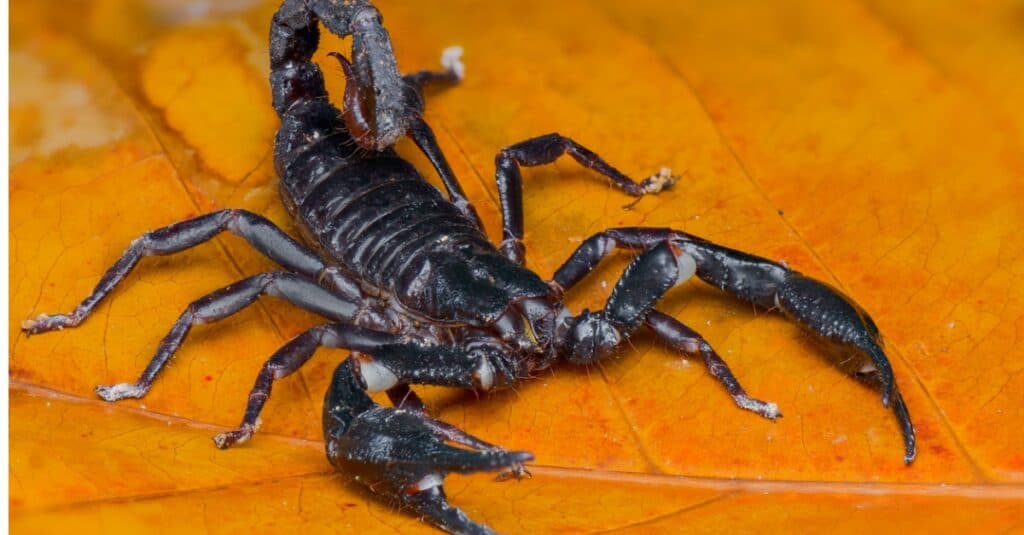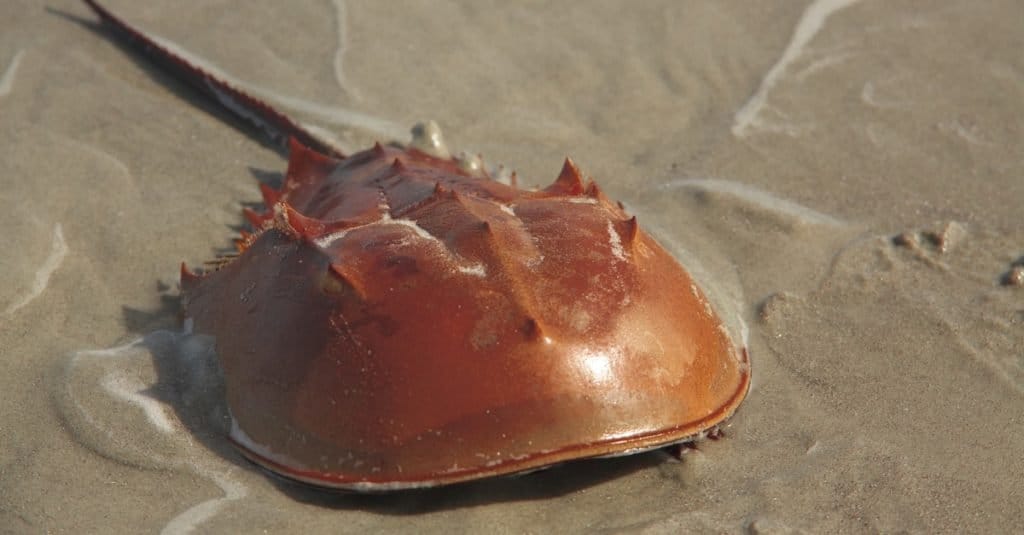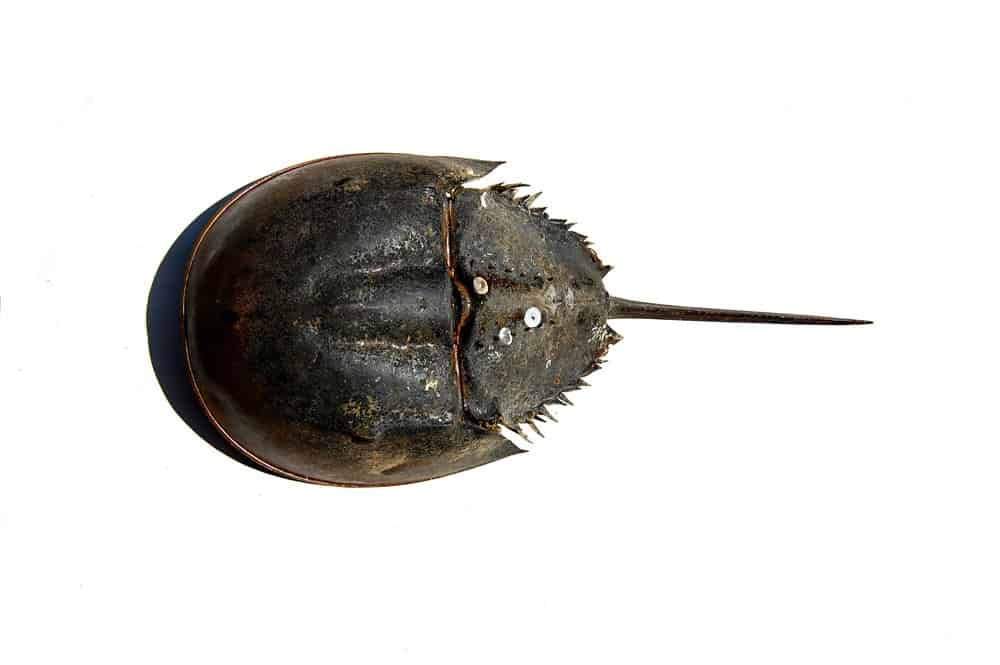The evolutionary history of life on earth is hard to truly comprehend. The amount of time that has passed since those early signs of life is astronomical, but incredibly, we have a glimpse into that different world. There are two creatures that have given us clues as to what life looked like millions of years ago, and today, we are going to learn about them. Let’s discover: Trilobite vs Horseshoe Crab; what makes them different?
Comparing a trilobite and a horseshoe crab

| Trilobite | Horseshoe crab | |
|---|---|---|
| Living or extinct | Went extinct 252 million years ago. | Four extant species currently alive. |
| Closest relatives | Members of the Chelicerata phylum | Ticks, spiders, scorpions |
| Exoskeleton | Articulated segments. | No articulation, solid exoskeleton. |
| Telson | No telson. | Fully developed telson. |
| Number of species | Over 20,000 | Four living species, |
The 5 differences between a trilobite and a horseshoe crab
The primary differences between trilobites and horseshoe crabs are their current extinction status, their exoskeleton, and their evolutionary history.
Trilobites are some of the oldest creatures to have ever lived on earth. Current fossil records show that the earliest examples of trilobites likely came around 540 million years ago and went extinct during the Permian period 252 million years ago after a long decline. Trilobites aren’t a single creature but a group of arthropods that flourished during the Cambrian explosion. There are over 20,000 species of trilobite ranging from small to relatively large.
Horseshoe crabs are also incredibly old creatures, although they came about 100 million years after the first trilobites were alive. They are referred to as crabs, although horseshoe crabs are arthropods and aren’t closely related to crabs at all. Unlike trilobites, horseshoe crabs are still alive today, with four known species across the world.
Let’s learn about what makes these two creatures different in some detail below.
Trilobite vs Horseshoe Crab: Living or extinct

Trilobites went extinct 252 million years ago.
©SciePro/Shutterstock.com
Trilobites are some of the oldest animals to ever live on the earth, first evolving over half a billion years ago. These creatures exploded across the earth before experiencing a slow decline over millions of years. The final group of trilobites died off in a mass extinction during the Permian period about 250 million years ago. There are no living trilobites today, only distantly related relatives.
Horseshoe crabs are also incredibly old, coming in only 100 million years after the first trilobites evolved. These creatures are arthropods that belong to the family Limulidae, and with the age of the species, they are considered living fossils. Horseshoe crabs are still alive today and live all across the world in marine environments.
Trilobite vs Horseshoe Crab: Closest living relative

Scorpions, spiders, ticks, and mites are the closest relatives to trilobites and horseshoe crabs.
©iStock.com/Dwi Yulianto
Trilobites are extremely old creatures that evolved during a time when earth went through the largest explosion of biodiversity in history. As a result, these ancient ancestors are somewhat related to lots of other creatures today. There are no direct descendants of the trilobite, but the closest relatives alive today would likely belong to the Chelicerata phylum. Members of this group include sea spiders, horseshoe crabs, and scorpions. Horseshoe crabs are often cited as the closest living relatives of trilobites, but they are no more closely related than any other creature in the Chelicerata phylum.
Horseshoe crabs are members of the Limulidae family. Although they have the name “crab,” they aren’t closely related to them at all! Instead, horseshoe crabs are more closely related to arachnids like spiders, scorpions, ticks, and mites.
Trilobite vs Horseshoe Crab: Exoskeleton

Trilobites have segmented exoskeletons, while horseshoe crabs have a solid exoskeleton.
©SandraG/Shutterstock.com
One of the best ways to tell the difference between trilobites and horseshoe crabs is through their exoskeletons. Although there is no fossilized tissue of any trilobites, their hard parts have been fossilized. There is massive diversity across the thousands of species of trilobites, but most of them have a segmented exoskeleton that closely resembles a roly-poly.
Horseshoe crabs also have an exoskeleton, but there’s is less segmented and appear as a seamless surface until a single segmented portion near their tail. As their name suggests, the chitinous exoskeleton of the horseshoe crab resembles a horseshoe.
Trilobite vs Horseshoe Crab: Telson

Horseshoe crabs have telsons.
©mtd/Shutterstock.com
Another easy way to distinguish between a trilobite and a horseshoe crab is the presence of a telson. The telson is simply the term used in reference to a tail. Trilobites don’t have a distinct telson, although some appear to have small antennae on their rear.
Horseshoe crabs can easily be identified by their tails. The telson is connected to their abdomen and closely resembles that of a stingray. Contrary to popular belief, however, horseshoe crabs don’t have stingers and can’t hurt a human. Instead, they use their telson to aid in steering while swimming or to right themselves if turned over.
Trilobite vs Horseshoe Crab: Number of species
When most people refer to a trilobite, they are generally talking about a single creature. Trilobites have a common appearance, but they aren’t a single creature at all. Rather, they are a group of arthropods that evolved before the Cambrian explosion. From their initial appearance to their extinction, the group existed for over 250 million years. During that time, there were thousands of species that developed within the group. Humans have been able to discover the records of over 20,000 species, although there were likely more that have yet to be discovered.
Horseshoe crabs have a long evolutionary history as well, but they have significantly less diversity among their evolutionary line today. Currently, there are four living species of horseshoe crab:
- Carcinoscorpius rotundicauda (the mangrove horseshoe crab) – found in South and Southeast Asia
- Limulus polyphemus (the Atlantic or American horseshoe crab) – found along the Atlantic coast of the United States and the Southeast Gulf of Mexico
- Tachypleus gigas (the Indo-Pacific, Indonesian, Indian or southern horseshoe crab) – found in South and Southeast Asia
- Tachypleus tridentatus (the Chinese, Japanese or tri-spine horseshoe crab) – found in Southeast and East Asia
The photo featured at the top of this post is © Budimir Jevtic/Shutterstock.com
Thank you for reading! Have some feedback for us? Contact the AZ Animals editorial team.






